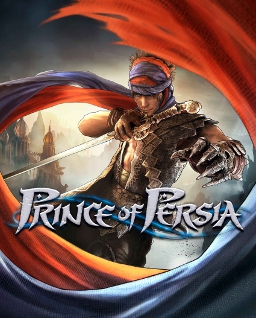In late 2008, Ubisoft released “Prince of Persia,” which was meant to be a reboot of the original series released in 1989. While the later reboot, “Prince of Persia: Sands of Time,” was met with more acclaim, “Prince of Persia” is definitely a game that can stand on its own.
The game itself is nothing extremely special. The story follows an unnamed warrior (who will be referred to as the Prince) who stumbles upon a lost woman while searching for his missing donkey. The woman explains that her name is Elika, she is a princess, and she must return to the temple. The Prince follows her and watches as her father destroys the Tree of Life. Ahriman, the god of darkness, is trapped within this tree, and breaking the tree releases him. This corrupts the world, and Elika explains that the only way to stop the corruption from spreading is to heal the fertile grounds. While this seems to be a simple task, it is quite difficult, as various monsters guard the fertile grounds and many require special powers granted by Ormazd, the god of Elika’s people. To access these powers, the player must collect light seeds and take them to the temple. The light seeds then unlock powers that are used to reach more fertile grounds. After healing all of the fertile grounds, the Prince and Elika return to the temple to fight Ahriman himself.
Sadly, the game builds up to what could have been a great, satisfying ending, but instead leaves players angry. Essentially, all of the player’s hard work goes to waste and the world is left in a corrupted state. While Ubisoft did release DLC to add more to the ending, the DLC costs much more than the game and adds very little to the story.
The character development mostly occurs through optional conversations between Elika and the Prince. These conversations mostly focus on the background and the future of the characters and do little to advance the story. At times, the dialogue feels forced and unrealistic, which takes away from the game. Additionally, there are only two notable quotes from the entire game: “I could have had carpets *this* thick,” which is what the Prince says when he explains the significance of losing his donkey to Elika, and “if you would have your wish, then give me mine,” which Ahriman says at the end of every one of Elika’s flashbacks. The fact that there are only two memorable quotes shows how boring most of the dialogue really is. At times, the Prince and Elika are amusing; however, most of their dialogue seems to be filler to help reduce the repetitiveness of the game.
The gameplay leaves much to be desired. It is extremely repetitive and, once players understand how to defeat each of the monsters, the battles are of little challenge. The worst battles take place between the Prince and the Warrior King, a large monster made of stone. In the PS3 version of the game, it is nearly impossible to mash buttons fast enough to defeat the monster. Many players have resorted to using pencils to push the buttons as fast as possible. This has made the battles with the Warrior King little more than a nuisance and adds very little to the game.
One of the most interesting aspects of the gameplay is that the player can never die. Instead, Elika saves the Prince whenever he takes off more than he can chew by falling off a wall or jumping into a chasm. This is extremely helpful as the landscape is filled with jumps, wall running, and all sorts of various dangerous acts. However, at the same time, it can be frustrating as Elika returns the Prince to his last location on solid ground. There are many sequences where the Prince does not touch the ground for nearly a minute, so if the player fails to navigate a ledge, all of that work is lost. This aspect becomes especially important on the quest for light seeds.
Light seeds are often placed along the route used to reach the fertile ground. These are the easiest to collect and only require a small amount of the player’s time. However, collecting all of these light seeds is not enough to unlock more powers – in fact, many of the more remote light seeds have to be collected in order to finish the game. This provides an interesting challenge to players as some light seeds are in locations that require powers, which makes collecting them that much more difficult.
This game really excels in the environments. The landscape requires players to use all of their skills to navigate the world and collect light seeds, and this often requires a bit of creativity on the part of the player. While the rocks, water, sand, and other environmental features are not the most realistic, the level of detail fits well with the style of the game. Areas with healed fertile grounds can be quite beautiful with lots of foliage and light. However, corrupted areas are extremely dark and the environments can be difficult to navigate at times. The corruption, a black slime, reaches to grab the Prince as he runs past it, which can block the player’s view. However, it is extremely fitting and gives those areas the dark ambiance expected of an area covered in evil.
Even though the gameplay is quite lacking, “Prince of Persia” is an interesting game. The story itself is not very complex, but it is engrossing enough to keep players asking for more. Specifically, this game is perfect for those who love to collect everything in the world and those that want a casual, inexpensive game to play between new releases.


'Prince of Persia' has no comments
Be the first to comment this post!